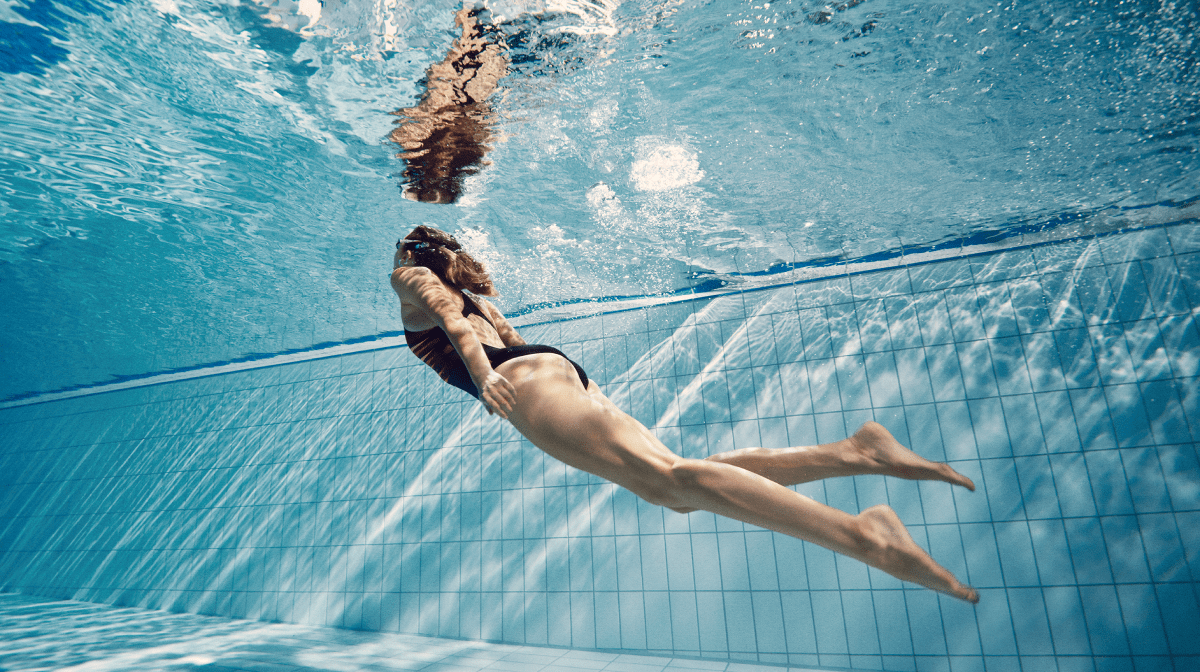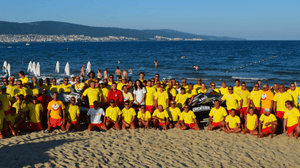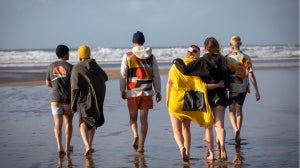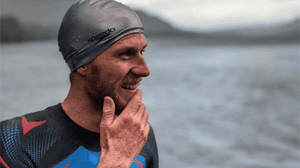
We love to know that swimmers of all ages and levels want to enjoy the water, and we’ve put this handy tip guide together to make sure that you and your loved ones stay safe while swimming.
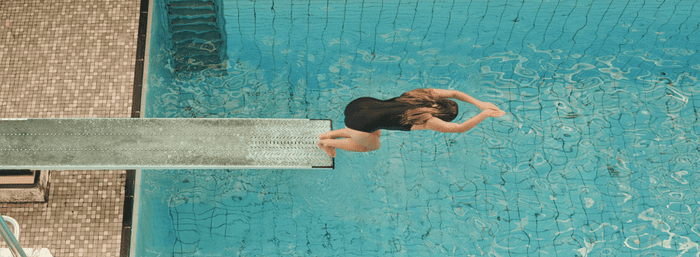
Swimming Pool Safety
Unless you live by the coast or a large lake, swimming pools are a great way of having fun in the water. While we all love the feeling of diving into a pool, make sure that you know how deep the pool is before you dive in, as head injuries commonly occur when children and adults dive or jump into shallow areas. Most swimming pools will have its depth displayed, and many will make the shallow and deep ends clear.
Better in Blue
Many countries around the world use the Blue Flag to show if a beach, marina, or boating area is environmentally clean and suitable for swimming. If you’re travelling to a beach, check whether or not the beach has been awarded a blue flag, as this will help you determine the water quality.
What’s Your Sign?
Once at the beach, keep an eye out local swimming guidelines, including signs, beach flags and their meanings. Find out which areas are covered by lifeguards, which are no-go zones for swimmers, and enquire about tides and any dangerous currents. It should be obvious, but always stick to areas marked safe for swimming, regardless of what other swimmers may be doing.
Strong Currents
“…unexpected currents could take you out to sea and out of your depth too quickly”
While the surface of the sea may seem welcoming at first, keep in mind that underwater currents need to be considered. This is why inflatable beds and other toys should not be used on open water, as unexpected currents could take you out to sea and out of your depth too quickly. Instead, save inflatables for calmer waters such as a pool. Usually, beaches will have a map or sign on display, making swimmers aware of strong currents, but consult a local lifeguard if in doubt.
By Rivers or Lakes
Lakes and rivers provide an idyllic setting for swimming. As tranquil as they may appear, lakes and rivers come with their own water safety rules, as even seemingly mild currents can unbalance inexperienced swimmers, including small children.
Adults can do a quick depth check with a long stick before others wade in, as mud and silt can easily mask the water’s true depth, making it appear shallower than it actually is. Lake and river beds can be stony and uneven, and may drop away suddenly, so enter cautiously for a safe, enjoyable swim.
A note on ‘No Swimming’ zones
“Signs have been erected for a reason, so always respect them.”
When the water looks calm, beautiful and inviting, it can be very tempting to turn a blind eye to ‘no swimming’ signs on holiday. Please keep in mind, however, that such signs have been erected for a reason, so always respect them. The reasons for ‘No Swimming’ areas can vary, from polluted water to unexpected currents and other hidden dangers, but either way the area has not met local standards. It’s not worth the risk, so keep going until you find an area deemed safe for public swimming.
Water safety is there to make sure you and your loved ones make the most of their swimming time, so don’t be afraid to check out your surroundings before you start your swim. For more tips, you can always visit the Royal Life Saving Society’s website, who also provide learning games for younger swimmers.
Stay safe, and enjoy your swim!
Want to know more? Why not download this handy Water Safety booklet for more information from Speedo!

Related Articles


